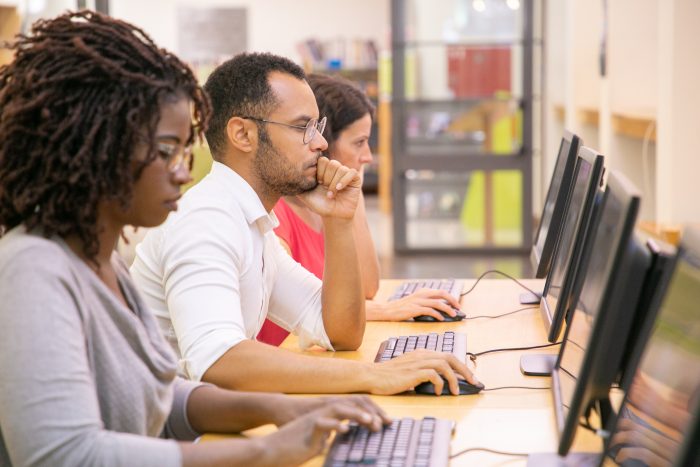
The use of technology has increased everywhere outside of prisons, even in schools. The employment of technology, law information, and inmates education in prison communities and schools may be very advantageous. All educational systems, even those in jail settings, may benefit significantly from using technology.
It is acknowledged that good outcomes depend more and more on personalized learning. Technology is one technique to quickly and successfully handle personalization because no one learning style fits everyone.
Correctional Education Should Have Technology Allowed
Prison-based higher education programs have an almost impossible task. Despite operating under strict regulations, they must offer their students an education of the same caliber as anything available outside the prison walls.
Since computers, books, and internet access are severely restricted by various state Departments of Corrections (DOC), incarcerated students rarely have access to learning resources that are commonly taken for granted on the outside. Additionally, instructors must work around DOC security protocols when developing and delivering their lessons.
A greater variety of information and resources may be accessed through blended learning, which combines conventional teaching techniques with auxiliary technology. It promotes personalization inside the educational system, enabling students to study at their speed, and supplements traditional core teaching by giving each student access to supplementary content as required. This is crucial in the prison system, where resources are few, and a wide range of people with very varied origins and educational levels are present.
Technology Made Education for Inmates Easier and More Effective
Formal education opportunities could not come up often or might only be available to certain people. Utilizing technology, law information and inmates education would also assist in speed procedures when moving a population between facilities or other situations where it may be temporary. It would guarantee that records from various institutions are merged and kept current, causing the least amount of disturbance to education possible.
Although conventional teaching techniques shouldn’t entirely be replaced, interactive technology can be more affordable than traditional teaching methods, with the possibility to buy and circulate many units for the price of one staff person.
Each institution’s utilization of new technology has the potential to provide additional content that may be utilized for career skills development, vocational rehabilitation, and mental health services.
By supplying digital versions of books and educational materials rather than depending solely on the meager resources provided to the jail library, it is possible to increase access to more high-tech possibilities. Regular tablet use, on which these materials would be provided, would also improve desperately required technological proficiency.
American Prison Data Systems is one business that offers safe, educational technologies on a tablet-based platform. These technologies include material, assessment exams, and the delivery of tiny prizes for reaching milestones, like unlocking a song to listen to. Jail Education Solutions offers a program called Edovo that provides various educational tools, such as college credit classes, anger management programs, and financial literacy.
IDS is another comparable technology that offers controlled and safe learning. Other systems, like JPay, provide common-space kiosks in jails that allow offenders to interact with friends and family through email, games, music, and video visitation. JPay customers on the outside must acquire encrypted tablets from the business to connect with convicts; access to the service is through purchased credits.
However, given that some of the most underprivileged people use these platforms and technological services on a for-profit basis, concerns have been raised about this. For instance, complaints have been made about Securus Technologies’ excessive fees for video conversations.
The tablets used in jails are secure, which is good news for anyone worried about the access these technologies allow to the broader digital world. For instance, APDS employs an unhackable tablet that is protected by plastic of the highest quality for unbreakability.
Several states are now testing these systems, notably Alabama, which uses the American Prison Data Systems platform. To ensure that the requirements of imprisoned and their families are entirely covered by one service, APDS is also considering extending into the telecommunications, banking, and retail sectors. This might make these systems even more alluring to all parties involved. California, Indiana, Kansas, and New York are just a few states that have already committed to tablet-based systems.
Another way to guarantee that detained people have the chance to spend their free time productively is by using technology like this, provided it is thorough and well-designed. It does not add to the expense burden on the convicts.
Bottom Line
Technology, law information, inmates education, and other initiatives can help individuals better themselves and their prospects. By addressing isolation and boredom, these methods could also assist lower inmate violence. To reach more people than ever before, technology has the potential to be widely utilized. In the end, this will help foster stronger communities’ development, more effective education fro inmates and decrease recidivism.
